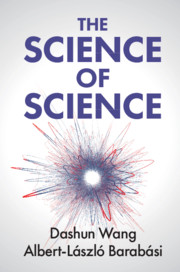Book contents
- The Science of Science
- The Science of Science
- Copyright page
- Dedication
- Contents
- Acknowledgements
- Introduction
- Part I The Science of Career
- Part II The Science of Collaboration
- 8 The Increasing Dominance of Teams in Science
- 9 The Invisible College
- 10 Coauthorship Networks
- 11 Team Assembly
- 12 Small and Large Teams
- 13 Scientific Credit
- 14 Credit Allocation
- Part III The Science of Impact
- Part IV Outlook
- Book part
- References
- Index
12 - Small and Large Teams
from Part II - The Science of Collaboration
Published online by Cambridge University Press: 07 February 2021
- The Science of Science
- The Science of Science
- Copyright page
- Dedication
- Contents
- Acknowledgements
- Introduction
- Part I The Science of Career
- Part II The Science of Collaboration
- 8 The Increasing Dominance of Teams in Science
- 9 The Invisible College
- 10 Coauthorship Networks
- 11 Team Assembly
- 12 Small and Large Teams
- 13 Scientific Credit
- 14 Credit Allocation
- Part III The Science of Impact
- Part IV Outlook
- Book part
- References
- Index
Summary
We begin with an anecdote about the largest team in scientific history, and then discuss the shift toward larger teams more generally. We show that the team size distribution has changed its fundamental shape since the 1950s, shifting from a Poussion distribution to a power law distribution as teams have grown larger. These two mathematical shapes represent different modes in which teams form. An exponential distribution leads to the creation of small “core” teams. A power-law distribution results in “extended” teams, accumulating new members in proportion to the productivity of their existing members. These two modes allow us to create an accurate model of team formation, providing us with insight about how team size affects its survival, longevity, and creation of knowledge. We can then assess some of the benefits and drawbacks of large teams, and explore the different kinds of science large and small teams produce. We show how to quantify the disruption of an idea by creating a disruption index, and explain how levels of disruption reflect team size. We end by discussing the implications of the shift to larger teams in science, making a case for preserving smaller teams.
Keywords
- Type
- Chapter
- Information
- The Science of Science , pp. 124 - 133Publisher: Cambridge University PressPrint publication year: 2021



